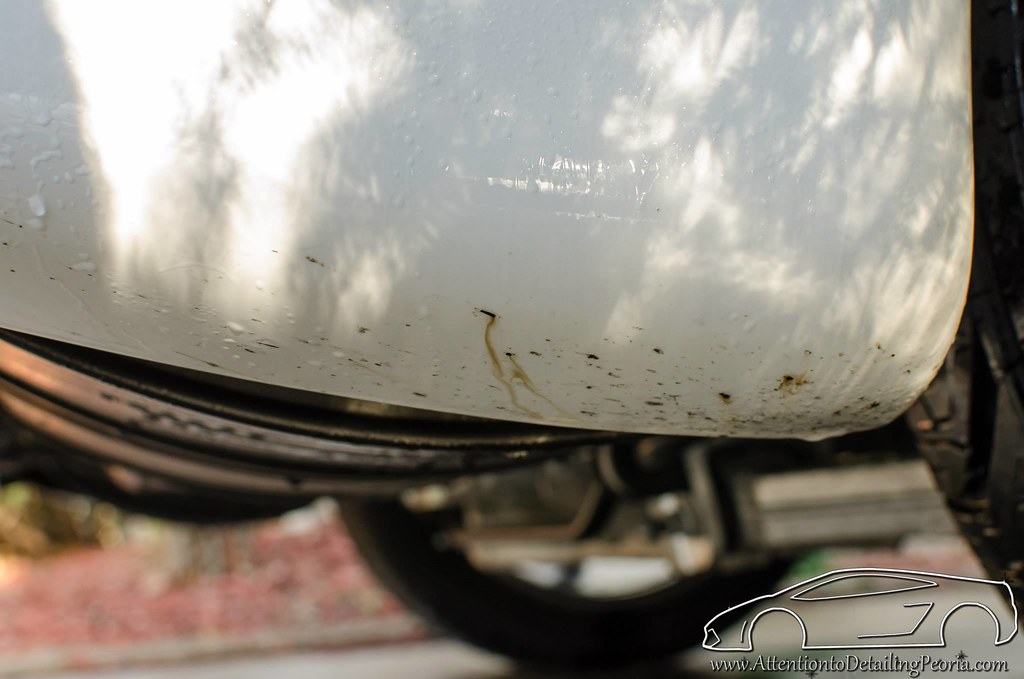Explaining the Decontamination Process (Part 2)
by Zach McGovernIn Part 1 of this series, I discussed some of the various products used throughout the decontamination process and what each of their roles were. In this article, I will elaborate on the order of operations in which these products are used.
The first real step in cleaning your paint is to complete a proper hand wash. If you are unfamiliar with, or simply need a refresher on, the three bucket washing process, check out this excellent article: How to Properly Wash and Dry A Car. This washing process removes loose dirt and contamination from the surface of your vehicle, and the remaining contaminates are known as above surface bonded contaminates. These bonded contaminates are “stuck” to the surface and are not removed with traditional washing. This is where the decontamination chemicals and products come in to play.
The first 2 steps of this process have been added to the decontamination process to yield better results in less time, therefore creating a more efficient process even though it has more steps. Technically all of this could be done with detailing clay, however it could be very time consuming. As the saying goes, “Work smarter, not harder”.
Step 1: Tar, Sap and Bug Removal
Road tar, tree sap, and bug guts are all common sights. These can be a real chore to remove if you do not have the proper tool or chemical for the job.
Stoner Tarminator or CarPro Tar X are both great chemicals for tackling all of these issues. These products are specialty cleaners that will quickly dissolve tar deposits and loosen bug guts and sap making them much easier to remove.

Photo: Tarminator working to dissolve road tar from the lower panels of this vehicle
Step 2: Iron Removal
Iron particles (also known as fallout or rail dust) are everywhere, especially in industrial or heavily populated areas. These tiny particles may look like very small rust particles on lighter colored vehicles, but although they cannot be seen on dark colors, they are definitely there. CarPro Iron X quickly and easily removes these iron particles.

Photo: CarPro Iron X turns purple as it reacts with iron and works to dissolve the particles.
Step 3: General Bonded Contamination Removal
Now that the road tar, tree sap, bug guts, and iron particles have all been removed from the paint, all that is left is to clean up the rest of the bonded particles from other sources of contamination. Detailing clay, or synthetic clay substitutes like the NanoSkin Autoscrub products are needed to remove these remaining particles to produce a perfectly clean and contaminate free surface.

Photo: Detailing clay is dirty from removing bonded contamination from surface
In summary, washing and drying alone does not ensure your vehicle is completely clean. Proper decontamination will leave your vehicle’s surface clean and smooth. Utilizing appropriate chemicals before claying will quickly remove specific types of contamination such as sap, tar, and iron will leave much fewer particles to pickup during the clay bar (or clay substitute) process.
Buy Products From This Article
Purchase the products used in this article individually or in one convenient package here!








Very good break down Zack i tired it on mine and saved about 15 to 20 minutes in the cleaning process. thanx
Great to hear!
Does any one know how to keep a clay bar clean after use? I just did my 2003 dodge truck and the clay bar work great but, I see that the clay bar is some dirty. Is there a way to clean it?
Hi Art – detailing clay becomes dirty as you remove bonded contamination from the vehicle. Once a clay bar is dirty, it needs to be thrown away and replaced with a clean clay bar. Clay bars are generally sold in large blocks which can be split up into 2-4 pieces, effectively providing you with 2-4 clay bars. It is not uncommon to use up an entire clay bar if a vehicle is heavily contaminated. Do not attempt to reuse the clay if it is too dirty! Just throw it away and get a new piece.
Synthetic clay substitutes such as the Nanoskin and Speedy Prep products can be rinsed and reused over and over. This is one of the benefits of these products.
My new Genesis 2018 G80 Sport has failed the baggy test. I properly washed and dried the car, twice. I then properly clay barred the surface with a medium Chemical Guys clay bar. The surface is still bumpy! I even used CarPro Iron X. What should I do now?